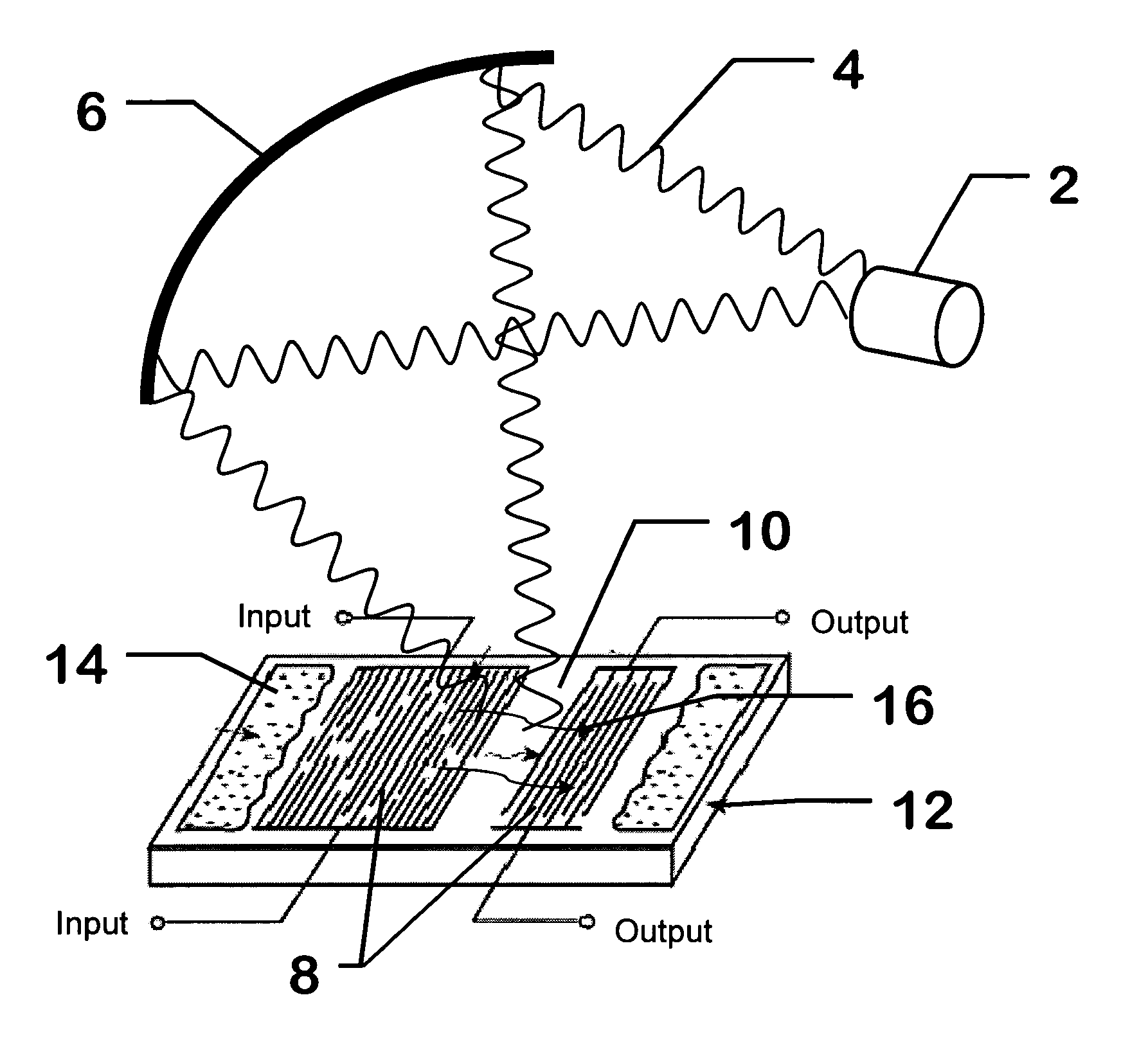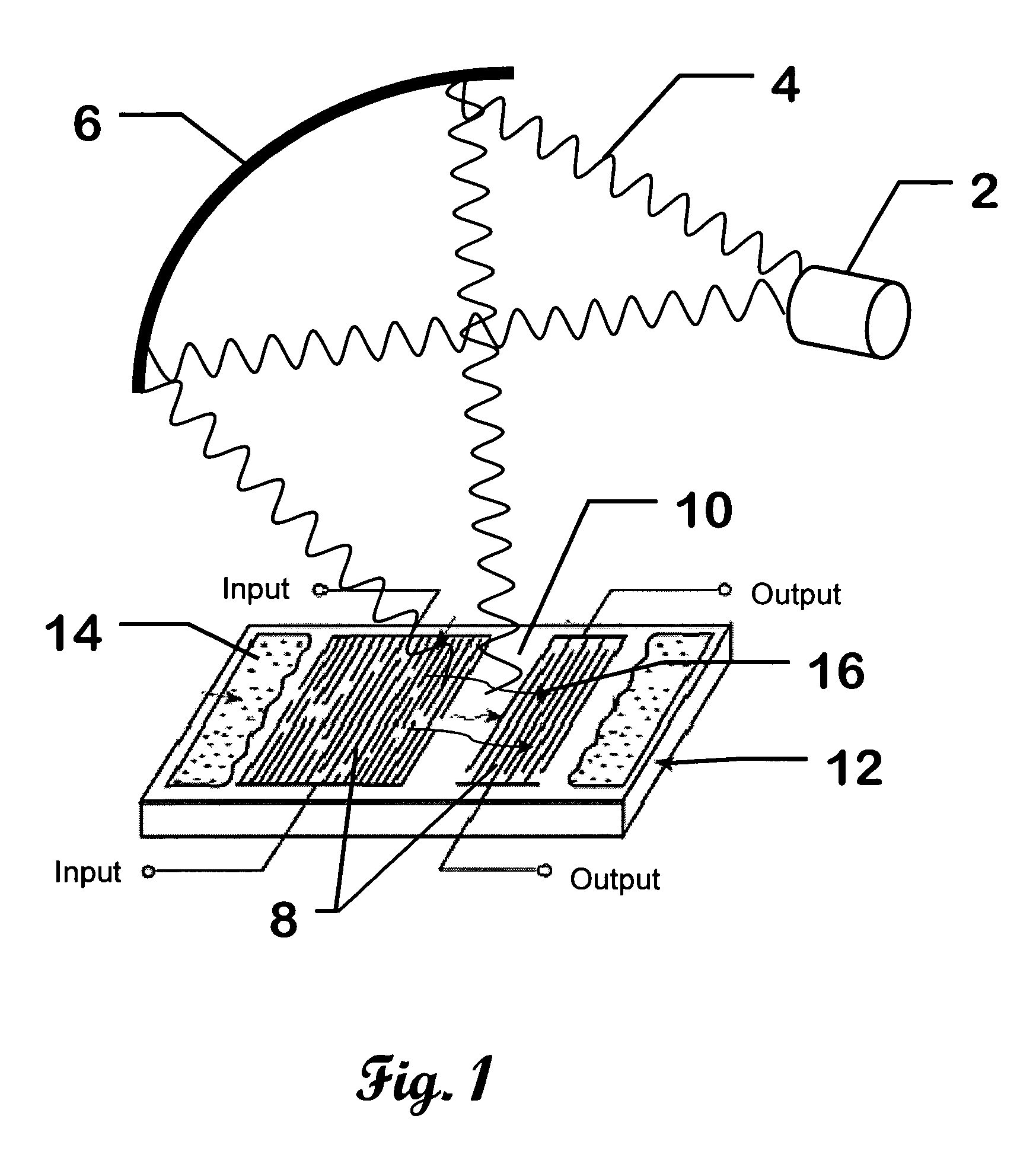Surface wave chemical detector using optical radiation
a surface wave chemical and optical radiation technology, applied in the direction of instruments, heat measurement, specific gravity measurement, etc., can solve the problems of inability to distinguish between different chemical species, disadvantages of other mass sensors such as lamb and love wave sensors, plate wave resonators, etc., and achieve the effect of reducing the number of chemically selective layers
- Summary
- Abstract
- Description
- Claims
- Application Information
AI Technical Summary
Benefits of technology
Problems solved by technology
Method used
Image
Examples
embodiment iii (fig.1)
[0018] Embodiment III (FIG. 1): In this embodiment the surface waves 16 are created by focused pulsed radiation 4 on a piezoelectric substrate 12. The wavelength of the light is such that it can produce electron-hole pairs in the substrate 12. The substrate 12 can be a non-centro-symmetric crystal such as ZnO or GaAs. The surface inherently has a band bending. The light creates charge carriers that reach the localized illumination spot on the surface because of band bending. The charge then spreads out. An annular or lateral electrode placed around or near the illumination spot can detect the electronic waves created by the pulsed light. The presence of adsorbed species 14 on the surface can change the surface wave 16 velocity and other characteristics. Although such variations are sufficient to detect analytes, this method gives little chemical specificity. Again, chemical identification can be obtained by exposing the adsorbed molecules to optical radiation with wavelengths charac...
PUM
 Login to View More
Login to View More Abstract
Description
Claims
Application Information
 Login to View More
Login to View More - R&D
- Intellectual Property
- Life Sciences
- Materials
- Tech Scout
- Unparalleled Data Quality
- Higher Quality Content
- 60% Fewer Hallucinations
Browse by: Latest US Patents, China's latest patents, Technical Efficacy Thesaurus, Application Domain, Technology Topic, Popular Technical Reports.
© 2025 PatSnap. All rights reserved.Legal|Privacy policy|Modern Slavery Act Transparency Statement|Sitemap|About US| Contact US: help@patsnap.com


